Introduction to High-Level System Design
System Design Fundamentals
- Functional vs. Non-Functional Requirements
- Scalability, Availability, and Reliability
- Latency and Throughput Considerations
- Load Balancing Strategies
Architectural Patterns
- Monolithic vs. Microservices Architecture
- Layered Architecture
- Event-Driven Architecture
- Serverless Architecture
- Model-View-Controller (MVC) Pattern
- CQRS (Command Query Responsibility Segregation)
Scaling Strategies
- Vertical Scaling vs. Horizontal Scaling
- Sharding and Partitioning
- Data Replication and Consistency Models
- Load Balancing Strategies
- CDN and Edge Computing
Database Design in HLD
- SQL vs. NoSQL Databases
- CAP Theorem and its Impact on System Design
- Database Indexing and Query Optimization
- Database Sharding and Partitioning
- Replication Strategies
API Design and Communication
Caching Strategies
- Types of Caching
- Cache Invalidation Strategies
- Redis vs. Memcached
- Cache-Aside, Write-Through, and Write-Behind Strategies
Message Queues and Event-Driven Systems
- Kafka vs. RabbitMQ vs. SQS
- Pub-Sub vs. Point-to-Point Messaging
- Handling Asynchronous Workloads
- Eventual Consistency in Distributed Systems
Security in System Design
Observability and Monitoring
- Logging Strategies (ELK Stack, Prometheus, Grafana)
- API Security Best Practices
- Secure Data Storage and Access Control
- DDoS Protection and Rate Limiting
Real-World System Design Case Studies
- Distributed locking (Locking and its Types)
- Memory leaks and Out of memory issues
- HLD of YouTube
- HLD of WhatsApp
System Design Interview Questions
- Adobe System Design Interview Questions
- Top Atlassian System Design Interview Questions
- Top Amazon System Design Interview Questions
- Top Microsoft System Design Interview Questions
- Top Meta (Facebook) System Design Interview Questions
- Top Netflix System Design Interview Questions
- Top Uber System Design Interview Questions
- Top Google System Design Interview Questions
- Top Apple System Design Interview Questions
- Top Airbnb System Design Interview Questions
- Top 10 System Design Interview Questions
- Mobile App System Design Interview Questions
- Top 20 Stripe System Design Interview Questions
- Top Shopify System Design Interview Questions
- Top 20 System Design Interview Questions
- Top Advanced System Design Questions
- Most-Frequented System Design Questions in Big Tech Interviews
- What Interviewers Look for in System Design Questions
- Critical System Design Questions to Crack Any Tech Interview
- Top 20 API Design Questions for System Design Interviews
- Top 10 Steps to Create a System Design Portfolio for Developers
Data Structures and Algorithms
- Introduction to Data Structures and Algorithms
- Time and Space Complexity Analysis
- Big-O, Big-Theta, and Big-Omega Notations
- Recursion and Backtracking
- Divide and Conquer Algorithm
- Dynamic Programming: Memoization vs. Tabulation
- Greedy Algorithms and Their Use Cases
- Understanding Arrays: Types and Operations
- Linear Search vs. Binary Search
- Sorting Algorithms: Bubble, Insertion, Selection, and Merge Sort
- QuickSort: Explanation and Implementation
- Heap Sort and Its Applications
- Counting Sort, Radix Sort, and Bucket Sort
- Hashing Techniques: Hash Tables and Collisions
- Open Addressing vs. Separate Chaining in Hashing
- DSA Questions for Beginners
- Advanced DSA Questions for Competitive Programming
- Top 10 DSA Questions to Crack Your Next Coding Test
- Top 50 DSA Questions Every Programmer Should Practice
- Top Atlassian DSA Interview Questions
- Top Amazon DSA Interview Questions
- Top Microsoft DSA Interview Questions
- Top Meta (Facebook) DSA Interview Questions
- Netflix DSA Interview Questions and Preparation Guide
- Top 20 DSA Interview Questions You Need to Know
- Top Uber DSA Interview Questions and Solutions
- Google DSA Interview Questions and How to Prepare
- Airbnb DSA Interview Questions and How to Solve Them
- Mobile App DSA Interview Questions and Solutions
DSA Interview Questions
- DSA Questions for Beginners
- Advanced DSA Questions for Competitive Programming
- Top 10 DSA Questions to Crack Your Next Coding Test
- Top 50 DSA Questions Every Programmer Should Practice
- Top Atlassian DSA Interview Questions
- Top Amazon DSA Interview Questions
- Top Microsoft DSA Interview Questions
- Top Meta (Facebook) DSA Interview Questions
- Netflix DSA Interview Questions and Preparation Guide
- Top 20 DSA Interview Questions You Need to Know
- Top Uber DSA Interview Questions and Solutions
- Google DSA Interview Questions and How to Prepare
- Airbnb DSA Interview Questions and How to Solve Them
- Mobile App DSA Interview Questions and Solutions
Best Roadmap to Become a Backend Developer in 2025
Are you excited to step into the dynamic field of backend development, where you’ll craft the robust systems that power today’s digital experiences? As we navigate 2025, with advancements in AI, cloud computing, and real-time applications reshaping the tech landscape, becoming a backend developer offers immense opportunities for innovation and career growth. This detailed guide provides a step-by-step roadmap, updated with the latest industry insights, to help you build essential skills and stand out in a competitive job market. To get started with free courses and receive the latest updates on backend development resources, sign up today and unlock your path to mastery.
Introduction to Backend Development
Backend development forms the core of any application, managing data, logic, and server-side operations that enable seamless user experiences. In 2025, as businesses prioritize scalable, AI-integrated systems, backend roles are more vital than ever. According to recent data, the demand for backend developers continues to surge, with the broader IT sector projected to add over 350,000 jobs annually through 2033. Global salaries reflect this importance: in the US, average backend developer earnings range from $115,000 to $165,000, depending on experience and location. In regions like India, entry-level roles start at around ₹6-8 lakhs, scaling to ₹20-30 lakhs for seniors.
As Hayk Simonyan notes in his 2025 roadmap, “Backend developers must adapt to trends like AI and edge computing to build future-proof systems.” This guide addresses key questions, such as essential languages, emerging trends, and portfolio-building strategies, while adhering to expert-backed insights for a trustworthy path forward.
Understanding the Role of a Backend Developer
Backend developers architect the server-side infrastructure, ensuring applications handle data securely and efficiently. Core duties include:
- Building and maintaining APIs for front-end integration.
- Managing databases to store, retrieve, and analyze data.
- Implementing security measures against vulnerabilities.
- Optimizing code for performance under high loads.
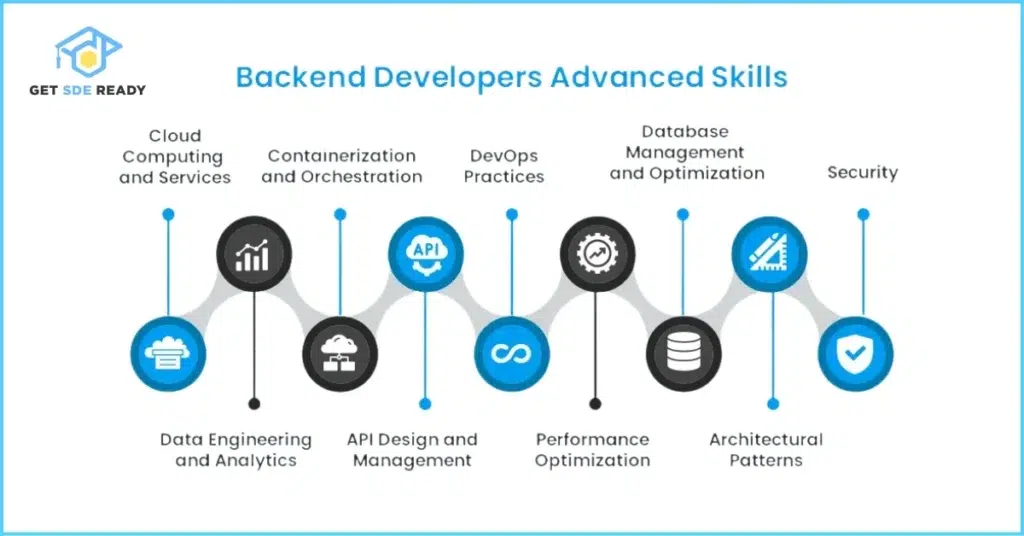
In 2025, roles increasingly overlap with DevOps and AI, with 70% of jobs requiring cloud proficiency. Demand is driven by e-commerce, IoT, and AI apps, with a projected 15-20% growth in related occupations.
Step-by-Step Roadmap to Become a Backend Developer
Embark on this journey with a structured plan, typically spanning 6-12 months for beginners. Focus on progressive learning, hands-on practice, and staying current with 2025 trends.
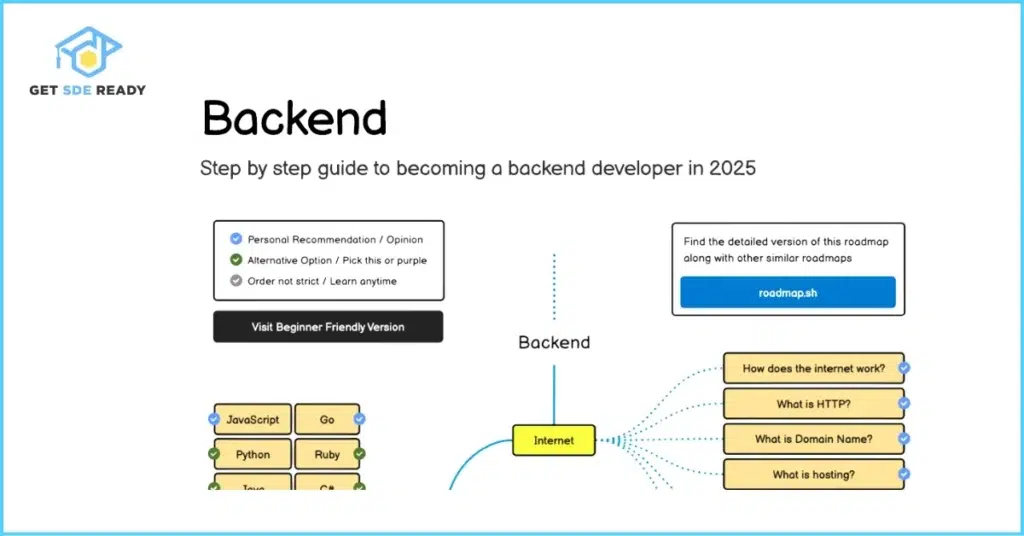
Step 1: Master the Fundamentals
Grasp how the web operates, including HTTP protocols, client-server models, and DNS. This knowledge is foundational for debugging and system design.
- Programming Languages: Start with Python for its readability and AI compatibility, or Node.js for real-time apps. Go and Rust are rising for performance-critical systems in 2025. Python’s usage has grown 7% year-over-year due to AI integrations.
- Data Structures and Algorithms (DSA): Essential for optimization. Learn arrays, graphs, and complexity analysis. For targeted practice, courses on DSA offer structured problem-solving exercises.
- Version Control: Git is indispensable for collaboration. Practice on GitHub for branching and pull requests.
Dedicate 4-6 weeks here, using platforms like freeCodeCamp for interactive learning.
Step 2: Dive into Databases
Databases power data management. In 2025, hybrid SQL/NoSQL setups are standard for flexibility.
- SQL Databases: PostgreSQL or MySQL for structured queries and transactions.
- NoSQL Databases: MongoDB for scalable, unstructured data in apps like social media.
- Advanced Tools: Redis for caching and real-time analytics.
Over 80% of backend roles demand database expertise. Build a simple database-driven app to apply concepts.
Step 3: Learn Backend Frameworks and APIs
Frameworks streamline development. Choose based on your language:
- Python: Django for full-featured apps or FastAPI for speed.
- Node.js: Express.js for lightweight APIs.
- Java: Spring Boot for enterprise-scale.
- Emerging: Go’s Gin or Rust’s Actix for high-performance.
APIs evolve with GraphQL overtaking REST for efficient data fetching in complex systems. To build a strong foundation, comprehensive web development courses cover frameworks and full-stack basics.
Step 4: Focus on Security, Testing, and Optimization
Security is paramount, with breaches costing billions. Learn OWASP guidelines, JWT/OAuth for auth, and encryption.
- Testing: Use Jest (JS) or PyTest for unit and integration tests.
- Optimization: Implement load balancing and monitoring with tools like Prometheus.
Step 5: Explore Advanced Topics
- Containerization: Docker and Kubernetes for deployment.
- Cloud Platforms: AWS, Azure, or GCP—essential as cloud-native apps dominate.
- Microservices: With Kafka for event-driven architectures.
- CI/CD: Automate with GitHub Actions.
For holistic growth, all-in-one courses mastering DSA, web dev, and system design provide integrated learning.
Step 6: Build Projects and Portfolio
Apply skills through projects:
- A scalable API for a task manager.
- An e-commerce backend with authentication and payments.
- An AI-integrated chat app using real-time features.
Contribute to open-source on GitHub. If data intrigues you, data science courses enhance backend analytics skills.
Essential Skills and Technologies for 2025
Stay ahead with these priorities:
Category | Top Technologies | Why Important in 2025 |
Languages | Python, Node.js, Go, Rust | Python for AI; Go/Rust for concurrency and security. |
Frameworks | Django, Express, Spring Boot, FastAPI | Efficiency in microservices and AI integration. |
Databases | PostgreSQL, MongoDB, Redis | Handling AI/ML data and real-time needs. |
Cloud/DevOps | AWS, Docker, Kubernetes | Cloud-native growth to $1.24T market by 2027. |
Trends | Serverless, Edge Computing, AI | Low-latency, cost-effective solutions. |

Soft skills like problem-solving and teamwork are equally crucial.
Job Market Insights and Career Tips
In 2025, the market favors versatile devs, with AI roles booming. US salaries average $115K-$165K; globally, growth is steady.
Tips:
- Customize resumes with keywords like “microservices” and “AI integration.”
- Prepare for interviews focusing on system design.
- Network via LinkedIn and meetups.
- Certifications: AWS Developer or Google Cloud.
For rapid skill boosts, crash courses target key areas.
Future Trends in Backend Development
- Serverless Architectures: AWS Lambda for auto-scaling.
- AI/ML Integration: Frameworks with built-in AI tools.
- Edge Computing: For low-latency IoT and apps.
- Zero-Trust Security: Enhancing API protection.
- Sustainable Coding: Energy-efficient practices.

AI augments but doesn’t replace devs, focusing on innovation.
Conclusion
Launching a backend career in 2025 demands dedication, but the rewards are substantial. Begin with fundamentals, practice relentlessly, and embrace trends. Your action plan: Select a language, build a project, and network. Dive in today for a thriving future.
(Word count: approximately 1,920)
FAQs
What programming languages are best for backend development in 2025?
Python, Node.js, Go, and Rust lead for backend development, offering AI support, scalability, and performance in server-side applications.
How long to become a backend developer in 2025?
It takes 6-12 months from scratch, emphasizing languages, frameworks like Django, databases, and trends such as serverless computing.
What skills do backend developers need in 2025?
Core skills include API design (REST/GraphQL), database management (SQL/NoSQL), cloud platforms (AWS), DevOps tools, and security.
Are backend developer salaries rising in 2025?
Yes, averages hit $115K-$165K in the US, fueled by demand in AI, microservices, edge computing, and cloud-native development.
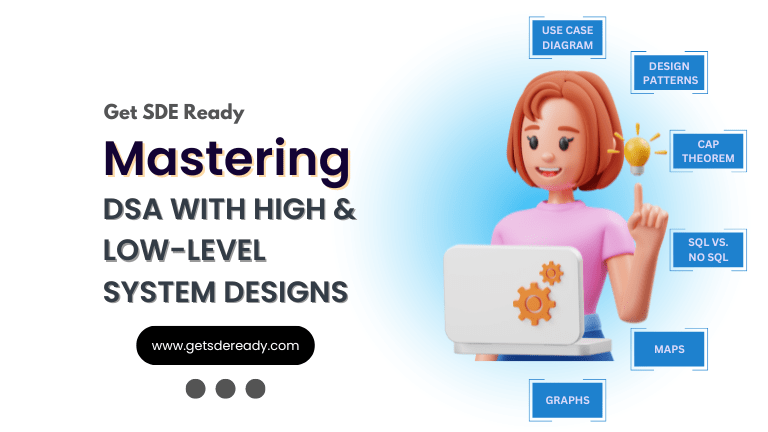
DSA, High & Low Level System Designs
- 85+ Live Classes & Recordings
- 24*7 Live Doubt Support
- 400+ DSA Practice Questions
- Comprehensive Notes
- HackerRank Tests & Quizzes
- Topic-wise Quizzes
- Case Studies
- Access to Global Peer Community
Buy for 60% OFF
₹25,000.00 ₹9,999.00
Accelerate your Path to a Product based Career
Boost your career or get hired at top product-based companies by joining our expertly crafted courses. Gain practical skills and real-world knowledge to help you succeed.
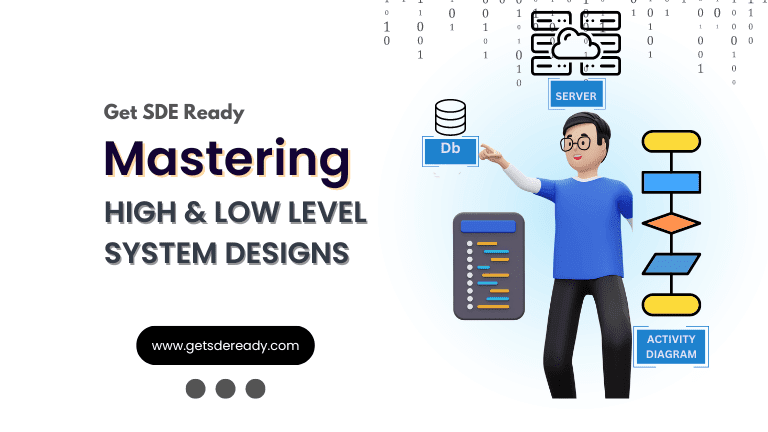
Low & High Level System Design
- 20+ Live Classes & Recordings
- 24*7 Live Doubt Support
- Case Studies
- Comprehensive Notes
- HackerRank Tests
- Topic-wise Quizzes
- Access to Global Peer Community
- Interview Prep Material
Buy for 65% OFF
₹20,000.00 ₹6,999.00
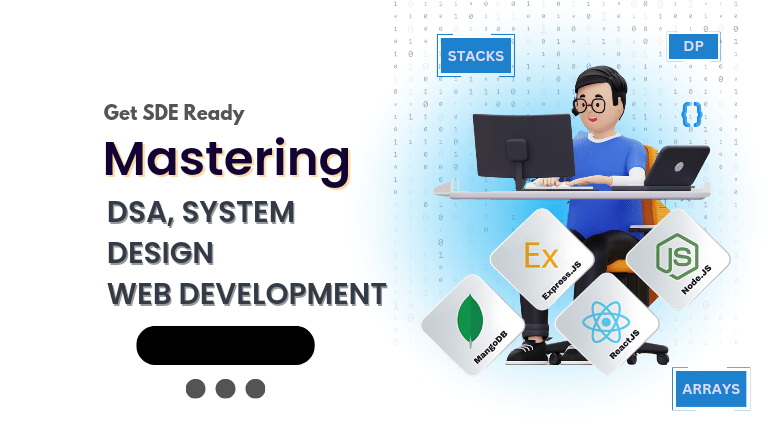
Fast-Track to Full Spectrum Software Engineering
- 120+ Live Classes & Recordings
- 24*7 Live Doubt Support
- 400+ DSA Practice Questions
- Comprehensive Notes
- HackerRank Tests & Quizzes
- 12+ live Projects & Deployments
- Case Studies
- Access to Global Peer Community
Buy for 57% OFF
₹35,000.00 ₹14,999.00

DSA, High & Low Level System Designs
- 85+ Live Classes & Recordings
- 24*7 Live Doubt Support
- 400+ DSA Practice Questions
- Comprehensive Notes
- HackerRank Tests & Quizzes
- Topic-wise Quizzes
- Case Studies
- Access to Global Peer Community
Buy for 60% OFF
₹25,000.00 ₹9,999.00
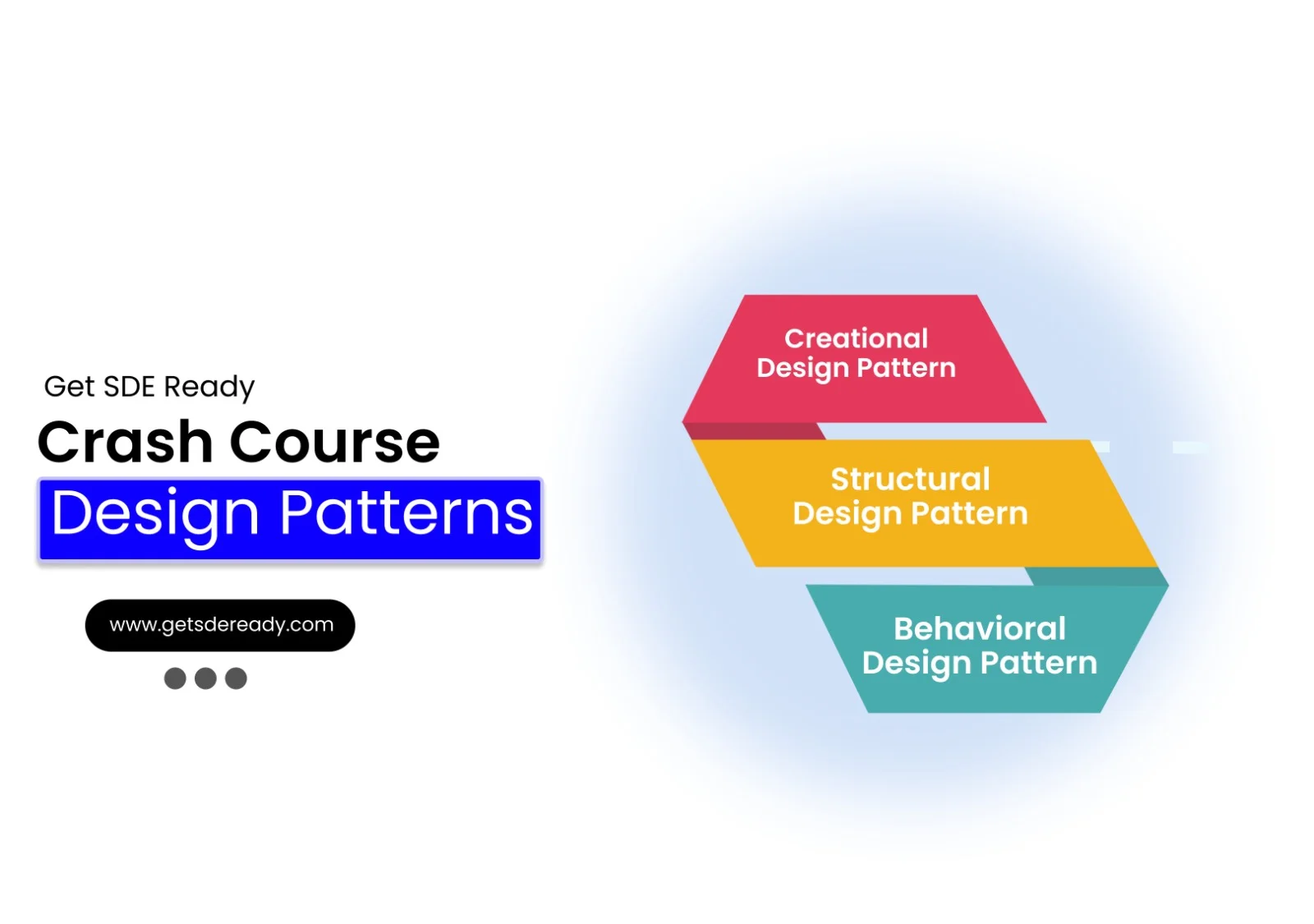
Design Patterns Bootcamp
- Live Classes & Recordings
- 24/7 Live Doubt Support
- Practice Questions
- Case Studies
- Access to Global Peer Community
- Topic wise Quizzes
- Referrals
- Certificate of Completion
Buy for 50% OFF
₹2,000.00 ₹999.00
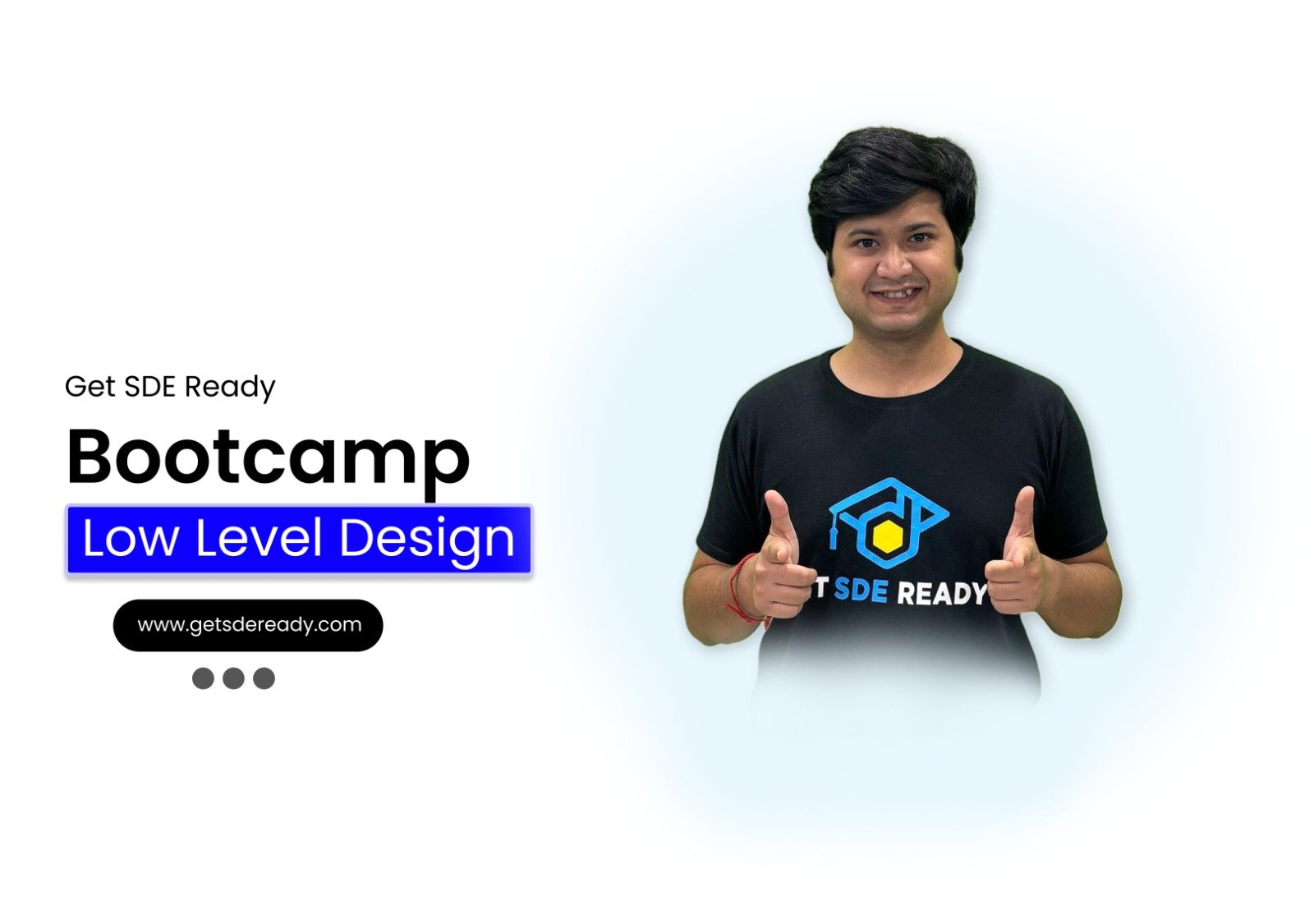
LLD Bootcamp
- 7+ Live Classes & Recordings
- Practice Questions
- 24/7 Live Doubt Support
- Case Studies
- Topic wise Quizzes
- Access to Global Peer Community
- Certificate of Completion
- Referrals
Buy for 50% OFF
₹2,000.00 ₹999.00
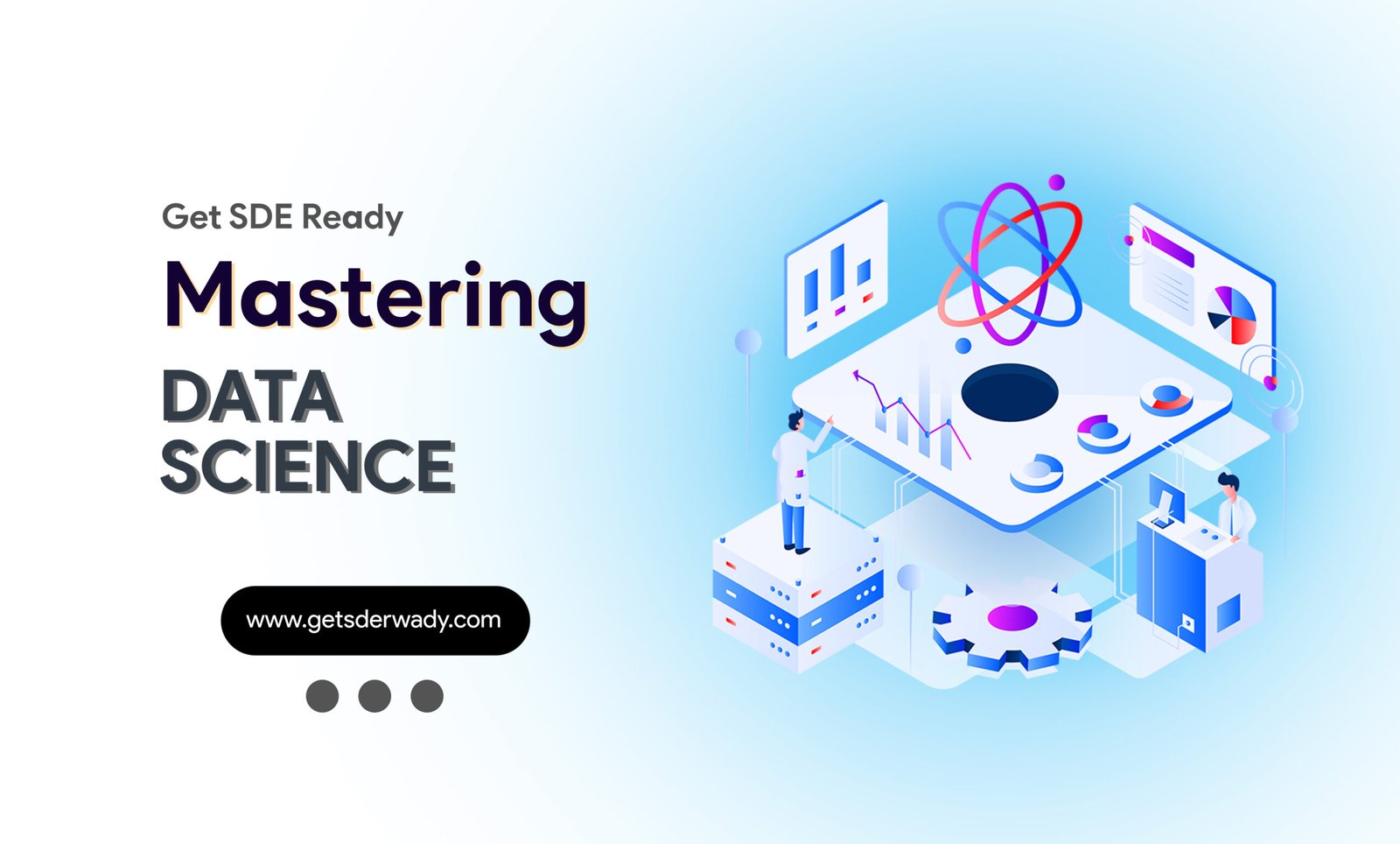
Essentials of Machine Learning and Artificial Intelligence
- 65+ Live Classes & Recordings
- 24*7 Live Doubt Support
- 22+ Hands-on Live Projects & Deployments
- Comprehensive Notes
- Topic-wise Quizzes
- Case Studies
- Access to Global Peer Community
- Interview Prep Material
Buy for 65% OFF
₹20,000.00 ₹6,999.00
Reach Out Now
If you have any queries, please fill out this form. We will surely reach out to you.
Contact Email
Reach us at the following email address.
arun@getsdeready.com
Phone Number
You can reach us by phone as well.
+91-97737 28034
Our Location
Rohini, Sector-3, Delhi-110085